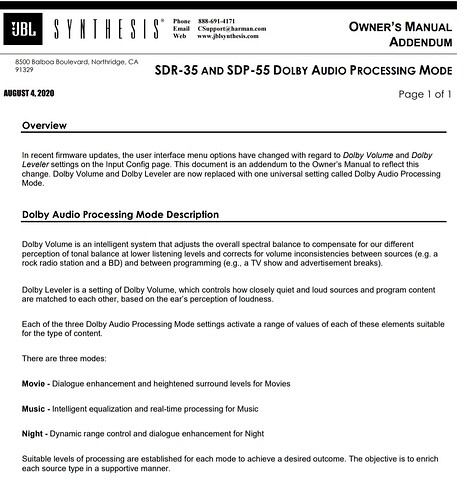Thanks desray for your time yesterday. I havent had the time to reply as I was busy working out on how to get the projector calibration to track what I was seeing at your place. The JVC Laser with lumagen didn’t disappoint. The video looked very natural and beautiful, it was like a reference point for me to bring home and try and match up to what I just saw. Im glad I visited you, it was so good catching up after such a long time.
So much has changed since and the sound is also fantastic. Not only bass slam is happening at chest levels, the bass articulation was really good as well. I could feel the energy move as the cars swerve left to right. The bass shakers though crossed at 50hz, didn’t really draw attention and supplemented the subwoofer energy nicely.
The system was well calibrated. Immediately you can tell the quality. I enjoyed it because I was experiencing all the details and refinement
With regards to dial norm, dynamic compression , you have explained it correctly
DialNorm is a metadata and existed only when playback in bitstream and the flag will be activated at the digital domain before passing the metadata over to the AVR or Amp’s D-A conversion.
It is quite clear because when we tested the bumblebee MKV file, that file doesn’t contain the dialnorm nor dynamic compression flag. But changing the settings on the AVR , changes how the AVR processes the signal , compressing the loudest and boosting the lower passage. This setting here, can be done for any dolby digital movie.
The difference is this.
If the original bluray contains the dialnorm and dynamic compression flag, this “CANNOT” be defeated by anthem, unless u switch it to PCM at source player and not bitstream. The signal comes in at lowered volume with dynamic compression engaged.
If the bluray file doesn’t contain dialnorm and dynamic compression, one can choose to apply the necessary dynamic compression by going to “dolby audio post processing”. The processor then applies the necessary voicing to enhance dialog and compresses audio so loud and soft passages sound the same
So one is without a choice, the anthem “will”process the dynamic compression and level offset if it sees this flag when bitstreamed.
Another is the user gets to choose if he wants to have dialogue enhanced and dynamic compression engaged . It becomes a choice here





